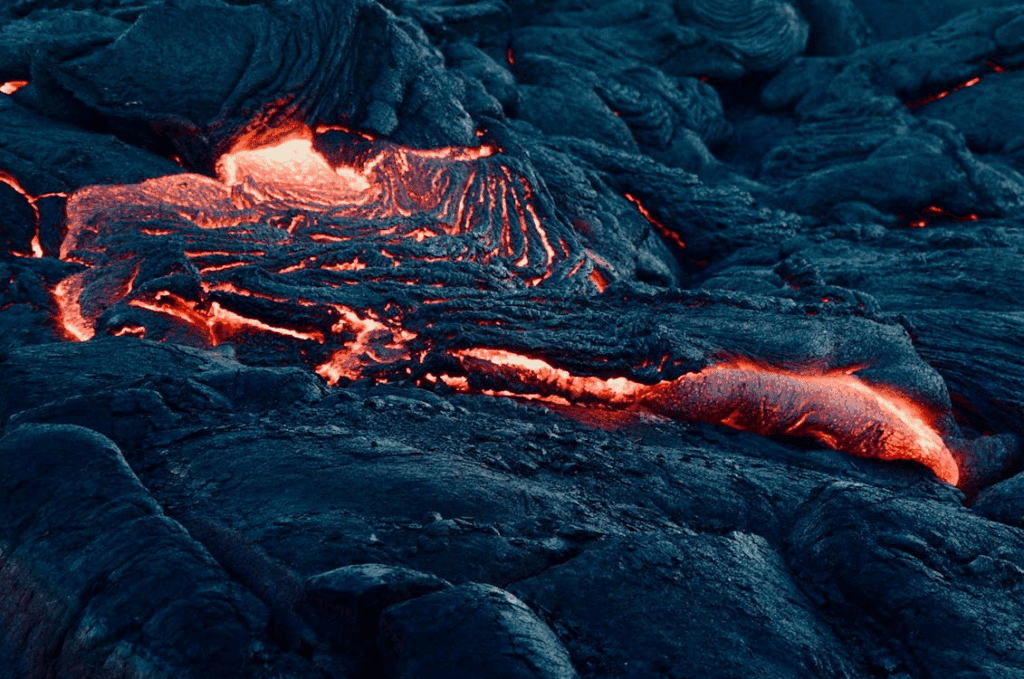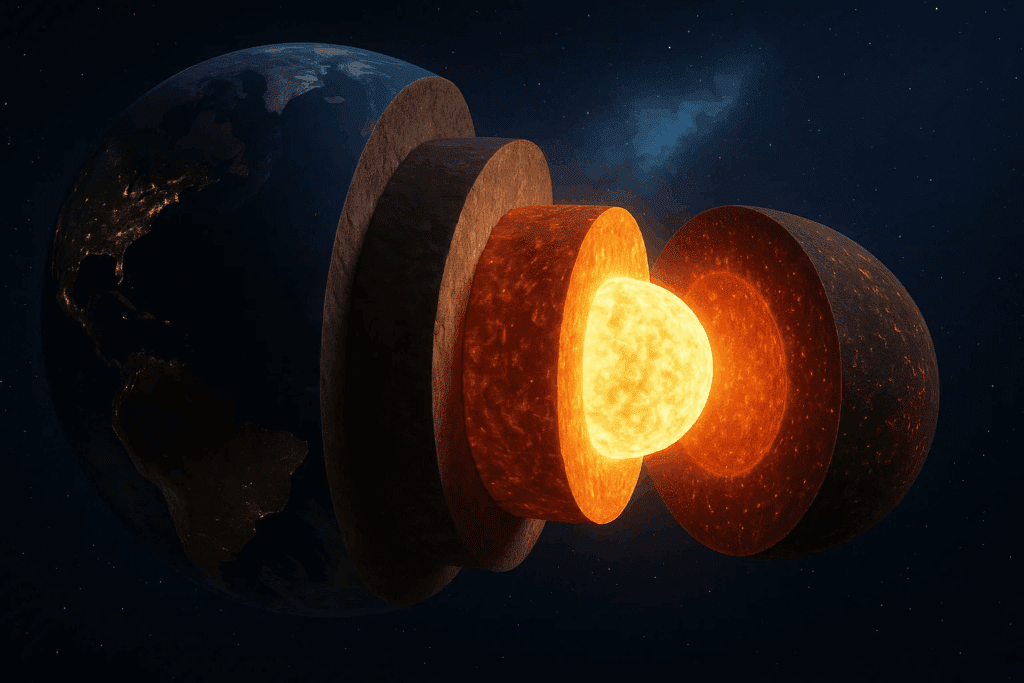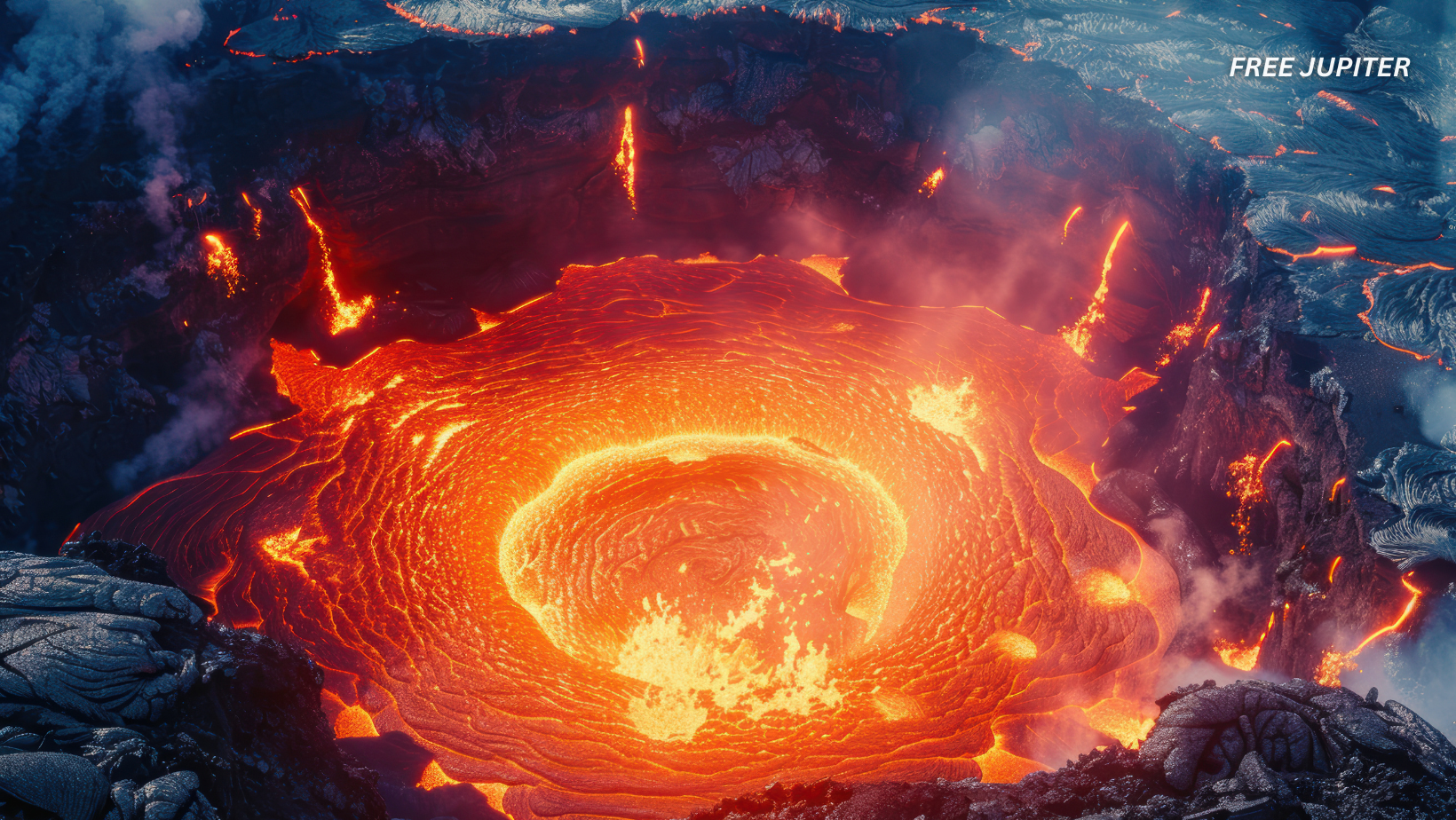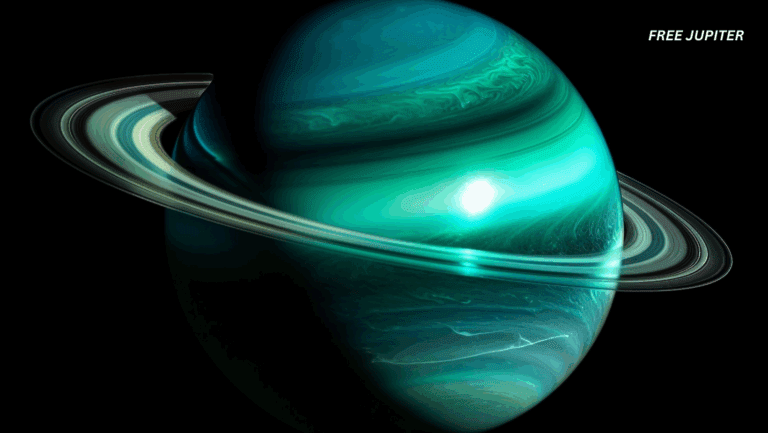No, this isn’t science fiction. It’s a carefully documented scientific finding that’s stirring excitement across the geoscience community. Researchers recently found evidence that certain materials typically locked deep inside the core, including precious metals like gold, are slowly making their way up to the surface. And the proof is hiding in plain sight: inside cooled lava from Hawaii’s volcanoes.
For as long as Earth has existed, scientists believed that its core, the searing hot, iron-rich heart of our planet, was sealed off from the surface. Hidden beneath around 1,800 miles of solid rock and molten mantle, the core was thought to be unreachable, unchangeable, and untouchable by anything above. But that assumption is starting to crack. The stunning new discovery from volcanic rocks in Hawaii suggests something extraordinary.
This discovery didn’t happen overnight. It’s the result of years of research, advanced geochemical analysis, and cutting-edge tools that can detect trace elements in rock samples. What scientists uncovered is a chemical fingerprint from Earth’s deepest interior, one that could rewrite what we know about how the planet works. The implications are huge. If core material is reaching the surface, even in tiny amounts, it changes everything we thought we knew about Earth’s inner boundaries, the movement of precious elements, and the forces shaping our planet from the inside out.
Hawaii’s Volcanoes Hold a Secret
The clue came not from deep beneath the Earth but from the surface. In a new study published in Nature, led by Nils Messling, a geochemist at the University of Göttingen, researchers analyzed volcanic rocks from the Big Island of Hawaii. These rocks form as molten material rises from deep in the Earth and erupts through volcanoes like Kīlauea and Mauna Loa.
Inside these volcanic rocks, scientists found an unusual concentration of ruthenium-100. This is an isotope that is rarely found in the Earth’s mantle or crust. However, it is believed to be abundant in the planet’s core. This raised a big question: How did something from the core get all the way to the surface?

A Direct Link to the Deepest Earth
Ruthenium-100 is part of a group of elements known as highly siderophile elements. That means they tend to bond with iron and are pulled into Earth’s metallic core during planetary formation. These elements include gold, platinum, iridium, and others. Since the core is isolated by the mantle, scientists long assumed that these elements would be trapped far below the surface.
But this study suggests otherwise. The presence of core-derived ruthenium-100 in surface lava indicates that material from the core is making its way up. Not just trace elements, but actual chemical signatures from the Earth’s innermost layer are reaching the surface via volcanic plumes.
What This Means for Gold and Other Metals
While the headlines might sound flashy, “Earth’s core is leaking gold!”, the reality is more subtle. It doesn’t mean molten gold is oozing out of the planet like something from a sci-fi film. Instead, it means that tiny, trace amounts of precious metals like gold, trapped deep in the core for billions of years, may be reaching the surface through long-term geologic processes.
These materials ride up in what’s known as mantle plumes. These are columns of superheated rock that rise from the boundary between Earth’s core and mantle. When these plumes reach the surface, they cause hotspots and volcanic eruptions. Hawaii is one such hotspot, fueled by a deep plume that has likely been active for tens of millions of years.
Read More: Jupiter Used To Be Twice As Big – It Could Have Held 2,000 Earths Inside
A Shift in Geological Thinking
This discovery challenges a long-standing view in Earth science that the core has remained sealed off from the mantle for most of the planet’s history. Dr. Nils Messling, along with co-author Professor Matthias Willbold from the University of Göttingen, found clear evidence that some material from the core has been slowly leaking upward. Their findings suggest the interior of Earth is far more connected and dynamic than previously believed.
The presence of ruthenium-100 in Hawaiian lava offers a rare geochemical fingerprint from Earth’s core. This isotope, normally found in the metallic core, showing up in surface rocks, means that core-derived materials are slowly moving through the mantle. It gives scientists a way to study the deep Earth without needing to drill thousands of kilometers down.
Could This Change How We Find Precious Metals Like Gold?
This doesn’t just matter for theoretical geology. If mantle plumes can bring core-derived materials to the surface, scientists might be able to better understand where to find rare elements like gold, platinum, and palladium. These metals are valuable for everything from jewelry to electronics to medical devices.
Mining companies have long relied on geological clues to locate deposits. If certain volcanic rocks carry traces of deep Earth materials, they could offer a new strategy for exploring mineral-rich regions. However, the practical effects might be limited, since the quantities involved are still extremely small.

The Bigger Picture: A Living, Breathing Earth
What this discovery truly reinforces is the idea that Earth is not static. It’s a living planet in constant motion, with heat, pressure, and material cycling from deep below to the surface and back again. It’s easy to think of the ground under our feet as stable, but studies like this reveal that even the deepest parts of our planet are active.
The core itself, located around 1,800 miles below us, is made mostly of iron and nickel. It spins, it moves, and now it seems, it leaks. That leakage might be slow and rare, but it’s enough to leave a chemical trace on the surface that scientists can detect billions of years after Earth’s formation.
The Future of Deep Earth Research
This breakthrough opens the door to new types of research. Scientists will likely begin testing volcanic rocks from other hotspot regions around the world to see if they show similar traces of core material. If they do, it would confirm that Earth’s inner layers are more connected than we realized.
Researchers may also study the movement of specific elements like tungsten or osmium, which, like ruthenium, are known to be concentrated in Earth’s core. These findings could eventually help reconstruct how Earth evolved chemically and thermally over time.
Gold: A Clue from the Deep
The idea that Earth’s core is leaking gold might sound dramatic, but it’s based on real, peer-reviewed science. The detection of ruthenium-100 in Hawaiian volcanic rocks gives us a rare and valuable glimpse into the inner workings of our planet. It hints at a hidden connection between the surface and the center, a bridge that could help explain not just how Earth formed, but how it continues to change.
In the end, this is not just a story about gold. It’s a story about how Earth is still full of mysteries, and how sometimes, the answers rise up from below our feet.










